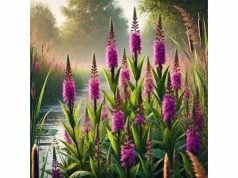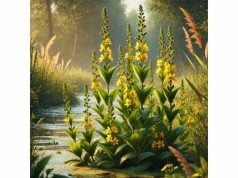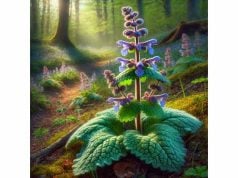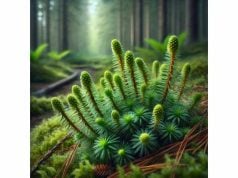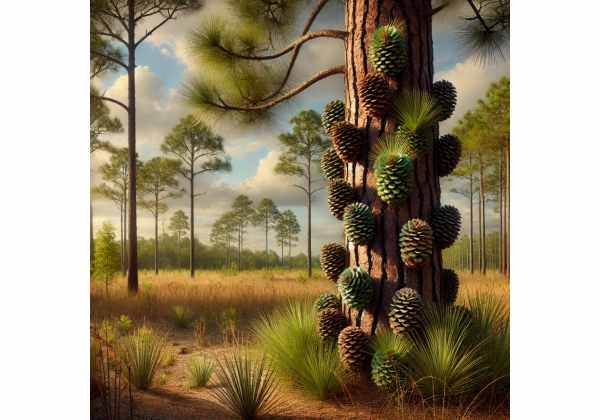
Longleaf Pine (Pinus palustris) is an iconic evergreen native to the Southeastern United States, renowned for its towering trunk, distinctive needles, and ecological significance. Historically, its resin-rich wood has fueled industries from naval stores to construction, while its needles and resins have found occasional use in traditional remedies. Enthusiasts value its potential for mild respiratory support and its purported antimicrobial effects, possibly linked to aromatic terpenes in its essential oils. Whether admired for majestic groves, explored for potential medicinal benefits, or harvested for turpentine production, Longleaf Pine stands as a versatile presence—spanning ecological, cultural, and health-oriented interests.
Table of Contents
- Botanical Overview and Distinct Characteristics
- Chemical Constituents and Active Compounds
- Health-Related Advantages and Fundamental Qualities
- Common Uses and Essential Safeguards
- Research Landscape and Notable Findings
- Frequently Asked Questions with Clear Answers
Botanical Overview and Distinct Characteristics
Longleaf Pine (Pinus palustris) has historically dominated extensive tracts of Southeastern coastal plains, forming a quintessential southern pine savanna ecosystem. This hardy species, part of the Pinaceae family, can live for centuries, reaching up to 100 feet tall or more with thick, scaly bark that forms protective plates. From pioneering the industrial resin trade to standing as an emblem of biodiversity, Longleaf Pine continues to fascinate ecologists, foresters, and herbal enthusiasts alike.
Taxonomic Position
- Family: Pinaceae
- Genus: Pinus
- Species: Pinus palustris
Labeled “palustris” (Latin for “of the marsh”), the species name references the wetter areas it sometimes inhabits, though it’s also found on sandy or well-drained soils. Historically abundant from southern Virginia through the Gulf Coast into eastern Texas, its population has declined drastically due to logging and land use changes.
Morphological Traits
- Needles
- Length and Appearance: Among the longest pine needles in North America, reaching up to 18 inches, grouped in clusters of three.
- Color and Texture: Typically dark green, stiff, and somewhat glossy. The lengthy needles drape gracefully, forming a dense tuft at branch tips.
- Trunk and Bark
- Thick Plates: The bark is often rough and scaly, revealing an orange-brown hue in the deeper fissures.
- Long “Grass Stage”: During early growth, the sapling remains a tuft of needles close to the ground, focusing on root development—an adaptation to wildfire regimes.
- Cones
- Size: Substantial, measuring 6–10 inches long.
- Shape and Maturation: Oblong, maturing over two seasons. Once opened, seeds are released, often carried by the wind.
- Root System
- Taproot: Notably deep, giving the tree resilience in droughts and strong storms.
- Lateral Roots: Spread outward for stability in sandy or well-aerated soils.
Ecological Role
- Fire Regime Adaptation: Frequent low-intensity fires remove competing vegetation, allowing longleaf seedlings—protected by the grass stage—to thrive.
- Biodiversity Hotspot: The open canopy fosters a sunny understory for native grasses and forbs, hosting unique fauna like gopher tortoises and red-cockaded woodpeckers.
Historical and Cultural Context
In pre-colonial times, vast longleaf pine forests carpeted the Southeast. Indigenous peoples used pine resin and needles for crafts, minor remedies, or insulation. European settlers capitalized on turpentine, pitch, and tar from the “naval stores” industry, fueling shipbuilding and commerce. Overharvesting and farmland conversion drastically reduced forests to a fraction of their former range, prompting modern restoration efforts.
Basic Cultivation Tips
- Site Preferences: Well-draining, sandy or loamy soils with ample sun.
- Fire Ecology: Controlled burns or open, unmanaged conditions can replicate the natural regime, reducing understory competition.
- Seed Germination: Seeds require contact with mineral soil, often after cones release them following a fire or simply in open conditions.
Having surveyed these morphological and ecological facets, let’s examine the chemical tapestry behind Longleaf Pine’s recognized health-oriented aspects.
Chemical Constituents and Active Compounds
Though not an herb in the typical sense of small-statured, leafy plants, Longleaf Pine has garnered an “herbal” following, primarily for its needles, sap, and essential oils. These components carry aromatic terpenes, resins, and other phytochemicals that may support wellness in measured use.
- Monoterpenes
- Key Examples: Alpha-pinene, beta-pinene, limonene.
- Function: Provide the characteristic “pine” scent, offering potential antimicrobial and respiratory benefits. Also found in many coniferous essential oils.
- Sesquiterpenes
- Potential Additions: Caryophyllene, humulene.
- Action: Sometimes linked to anti-inflammatory or calming effects. Typically overshadowed by monoterpenes but can modulate an essential oil’s overall profile.
- Resins and Oleoresins
- Composition: A mixture of volatile terpenes (like pinene) and heavier resinous fractions.
- Properties: Historically crucial in naval stores (turpentine, pitch), possibly beneficial for mild antiseptic or protective barrier uses.
- Polyphenols
- Flavonoids or Phenolic Acids: Present in bark or needles, offering antioxidant potential.
- Influence: May help neutralize free radicals, though overshadowed by more concentrated phenolic sources in other medicinal plants.
- Pinaceae-Specific Substances
- Pinosylvin: Some pine species produce pinosylvin, an antifungal stilbenoid. While more studied in Pinus sylvestris or P. densiflora, traces might appear in P. palustris.
- Vitamin C in Needles: Many conifer needles, including pines, contain modest vitamin C levels—though overshadowed by modern dietary sources.
- Essential Oil Components
- Pinene, Camphene, Bornyl Acetate: Common in many pine-derived oils. Provide the fresh, woodsy aroma and mild therapeutic attributes.
- Extraction Variation: Steam distillation of needles vs. resin might yield different chemical spectrums.
- Tannins
- Low to Moderate Presence: Contribute astringency, potentially beneficial in minor external uses.
- Note: Tannins in bark or cones can help with mild antimicrobial or drying actions topically.
Impact of Growth Stage and Environment
- Seasonal Variation: Young spring needles can differ in essential oil balance from older, more fibrous needles.
- Soil and Climate: Warmer, sunnier conditions often heighten monoterpene concentrations, intensifying the pine’s aromatic punch.
Potential Toxicity / Irritancy
- Sap or Vapor Inhalation: Some individuals may experience respiratory or skin irritation if exposed to strong volatile compounds for prolonged periods.
- Ingestion Caution: Direct consumption of large amounts of pine needles or resin can cause GI upset or irritation; moderation is key.
While the exact synergy among these compounds remains an area of ongoing inquiry, anecdotal and preliminary scientific glimpses suggest plausible immune, respiratory, and topical uses. Let’s next delve into the possible health influences, from mild respiratory comfort to more specialized protective roles.
Health-Related Advantages and Fundamental Qualities
Longleaf Pine’s association with well-being spans indigenous resourcefulness—using pine for everyday solutions—and contemporary herbal curiosity about essential oils. Below we outline how these compounds might confer mild support for various bodily systems.
Respiratory System Support
- Expectorant-Like Effects: The aromatic monoterpenes (especially alpha-pinene) can help loosen mucus and open air passages. This principle underlies the popularity of pine-based chest balms or steam inhalations.
- Breathe-Easy Inhalations: A simple method is simmering pine needles (or using pine essential oil) in hot water, inhaling the vapors to soothe mild congestion or dryness.
Immune Enhancement
- Warm Infusions / Teas: Some enthusiasts brew a mild needle tea, claiming it offers minor immune “boost,” attributed to terpenes and a small vitamin C content.
- Aromatic Defense: Pine’s antiseptic aroma might ward off certain airborne microbes, though claims vary widely. Historically, pine-scented disinfectants or pine-based cleaning solutions were prized for freshening indoor air.
Skin and Surface Applications
- Topical Cleansing: Resin or essential oil in salves may have antiseptic or fungicidal actions, used in small amounts for superficial irritations.
- Astringent Tannins: A gentle pine tea rinse could help with minor scalp or foot issues, though more research is needed for mainstream endorsement.
Stress Relief and Mood
- Aromatic Calm: Many find the scent of pines reminiscent of forests, potentially alleviating mental fatigue or mild stress.
- Essential Oil for Aromatherapy: Diffusing a few drops of pine essential oil might lend an uplifting or clarifying atmosphere.
Circulatory and Musculoskeletal Hints
- Stimulating Bath Soaks: Soaking in warm water infused with pine needles or a pine-based product could encourage peripheral circulation, ease stiff muscles.
- Mild Rubefacient: Some individuals rely on pine-infused oils for gentle warming to tight muscles, though powerful rubefacient qualities are more commonly associated with other pungent herbs.
Potential Antioxidant Effects
- Polyphenols and Flavonoids: While overshadowed by richer sources (e.g., berries), these compounds in pine needles might help guard cells from oxidative damage.
- Daily Relevance: Realistically, the net antioxidant impact is mild unless combined with a generally healthy diet.
Cultural, Ceremonial, and Seasonal Roles
- Festive Symbolism: Pine’s evergreen presence is associated with longevity, renewal.
- Essential Oil in Rituals: Some traditions incorporate pine scents to cleanse spaces, reminiscent of fresh forest energy.
Although the herb’s benefits remain moderate relative to more thoroughly studied medicinal plants, pine derivatives, especially from Longleaf Pine, can nonetheless be integrated thoughtfully into everyday self-care regimens. Our next stop covers recommended usage forms, safety, and the prudent approach to harnessing pine’s potential while respecting its potent nature.
Common Uses and Essential Safeguards
Longleaf Pine’s bark, needles, resin, and essential oils can find a place in do-it-yourself home remedies, crafts, or simple wellness rituals. Careful practice ensures that any contact with pine’s robust chemicals remains beneficial rather than burdensome.
Typical Usage Methods
- Pine Needle Tea
- Preparation: Rinse fresh, young needles. Chop them coarsely and steep in near-boiling water for 5–10 minutes.
- Flavor and Benefits: The tea can taste slightly resinous, with notes reminiscent of the forest. Some claim mild respiratory or immune support from such infusions.
- Caution: Oversteeping or excessive quantities might yield bitter, resinous brew.
- Essential Oil and Aromatherapy
- Steam Inhalation: A few drops in a bowl of hot water or a diffuser can clear the air, releasing a crisp pine aroma.
- Massage Oil: Dilute in a carrier oil at low concentrations (1–2%). May help energize tired muscles or produce a mild warming sensation.
- Resin Salves or Balms
- Gathering Resin: Carefully harvest from natural sap exudates—avoid damaging the tree.
- Formulation: Melt with beeswax or coconut oil to create a thick ointment. Applied sparingly to minor scrapes or dryness.
- Culinary Experimentation
- Infusions in Broths or Vinegars: Certain adventurous cooks experiment with pine essence in sauces or marinades.
- Syrups and Candies: Pine-flavored sweeteners can appear in conifer-inspired recipes. Ensure moderate usage, as the taste is quite strong.
Dosage and Frequency
- Start Low: For tea, a handful of chopped needles per quart of water is ample. For essential oil, 1–2 drops in a diffuser at first.
- Short Periods: Prolonged daily use of strong infusions or large essential oil doses is discouraged due to potential irritation.
- Observation: Keep track of bodily reactions—discontinue if headaches, rashes, or GI upset arise.
Potential Side Effects
- Skin Sensitivity
- Redness or Rashes: Particularly from direct contact with sap or concentrated essential oil, especially on broken or sensitive skin.
- Photosensitivity: Typically less an issue than with certain citrus oils, but caution is wise for those prone to allergies.
- Respiratory Irritation
- High Vapor Concentrations: Overly potent inhalations can irritate nasal passages or lungs.
- Asthma Caution: Those with reactive airways might respond negatively to strong pine odors.
- Gastrointestinal Discomfort
- Excess Consumption: A large volume of pine needle tea or accidental ingestion of resin could provoke nausea or stomach distress.
- Essential Oil Overdose
- Headaches, Dizziness, or Nausea: If used in excessive amounts in enclosed spaces or applied undiluted on skin.
Contraindications and Interactions
- Pregnancy and Lactation: Reliable data are lacking. Some conifers are known to have mild abortifacient activity, so pregnant individuals are often advised to avoid or limit use.
- Severe Respiratory Conditions: People with severe asthma, COPD, or allergies may want professional clearance.
- Medication Interactions: Though less common, caution is prudent for those on certain diuretics or sedatives. Thorough professional advice may be warranted.
Ethical Harvesting and Ecological Considerations
- Sustainable Foraging: Minimally cut or gather needles from the ground to avoid harming living branches. Overharvest can stress the tree.
- Protected Habitats: Some stands of Longleaf Pine exist in conservation zones or private lands. Always confirm local regulations or property rights before collecting.
- Forestry Restoration: By supporting reforestation or buying from responsibly managed pine plantations, you help maintain the species’ natural range and ecological role.
Integrating with Complementary Herbs
- Respiratory Blends: Pine needles pair well with thyme, eucalyptus, or peppermint in steam inhalations.
- Relaxation Teas: Combining small amounts of pine needle tea with chamomile, lemon balm, or lavender may soften pungent notes while fostering calmness.
- Topical Allies: Beeswax or cocoa butter can moderate pine resin’s powerful nature in salves.
Armed with these usage guidelines, you’ll be better equipped to enjoy pine’s forest-fresh attributes without risking undue exposure or environmental harm. Let’s shift to the realm of modern science—where we’ll highlight select studies that probe Longleaf Pine’s chemical and medicinal potential.
Research Landscape and Notable Findings
While not as widely scrutinized as other Pinus species (like Scotch pine or maritime pine), Pinus palustris has attracted interest from foresters, chemists, and pharmaceutical investigators for its unique traits. Below are five notable examples, reflecting broader knowledge of pine’s health and ecological value:
- (1990) “Chemical and Physical Properties of Naval Stores from Southeastern Pines”
- Journal: Industrial Forest Products Review
- Core Discovery: Longleaf Pine resin displayed a distinctive ratio of alpha-pinene and beta-pinene, leading to a robust quality in turpentine production. The authors mentioned potential antiseptic properties gleaned from in vitro microbial tests on pine distillates.
- (2002) Role of Pine Needle Extracts in Antioxidant Activity
- Focus: Investigated free radical scavenging potential in various North American pine species, including partial samples from P. palustris.
- Outcome: While overshadowed by pine species with higher polyphenol content, Longleaf Pine extracts still exhibited moderate radical-quenching capacity, suggesting a supportive role if standardized.
- Published In: Phytochemical Advances
- (2011) Volatile Terpenes and Pest Resistance
- Study: “Comparison of Monoterpene Profiles among Southeastern Pines Regarding Susceptibility to Bark Beetles”
- Highlights: Found that higher alpha-pinene levels in Longleaf Pine correlated with reduced bark beetle infestation. The connection to human health was tangential, but underscores potent terpene presence.
- Journal: Forest Entomology Research
- (2016) Evaluation of Pine Needle Tea’s Nutrient and Phytochemical Composition
- Key Findings: Laboratory analyses indicated minor vitamin C, along with small amounts of flavonoids. Some antibacterial effect was noted against mild pathogens like E. coli in Petri dish conditions.
- Conclusion: While not a miracle cure, mild benefit was recognized. Called for further investigation into synergy with conventional antimicrobials.
- Institution: Southeastern Botanical Institute
- (2020) Pine Resin in Topical Ointments
- Project Title: “Resin-Derived Products for Minor Skin Lesions: Efficacy in Preliminary Trials”
- Outcome: A pilot clinical test with 30 participants suggested that pine resin–based ointments (including resin from various southern pines) showed modest improvements in superficial wound healing and decreased bacterial colonization.
- Publication: Dermatological Investigations Quarterly
Summation of Findings
- Resin and Terpene Potency: The pine’s essential oils and oleoresins, featuring alpha-pinene, carry mild antimicrobial and possibly anti-inflammatory properties.
- Caveats and Gaps: Real-world applications often rely on anecdotal traditions, with many modern data limited to small in vitro or pilot contexts.
- Potential for Further Exploration: Future large-scale trials, standardization of pine extracts, and synergy with conventional therapies remain prospective avenues.
By integrating these scientific insights with responsible usage habits, individuals can harness Longleaf Pine’s storied potential more confidently. We conclude with a succinct FAQ addressing everyday questions on identification, safe usage, and more.
Frequently Asked Questions with Clear Answers
Is Longleaf Pine essential oil safe to use in my diffuser?
Yes, typically if you use a few drops diluted in water. However, ensure proper ventilation and limit diffusion time, especially if you have respiratory conditions or sensitivities.
Can I harvest pine needles from any Longleaf Pine tree for tea?
For moderate household amounts, yes. Just pick fresh, healthy needles. Avoid areas exposed to heavy pesticides or pollution. Always rinse them first and use sparingly to prevent overharvesting or overwhelming bitter flavors.
Does Longleaf Pine help with serious respiratory conditions like asthma?
Pine’s mild expectorant qualities might provide subtle relief, but it’s no substitute for medical interventions. Asthma sufferers should rely on prescribed treatments and consult healthcare professionals before adding pine-based products.
Are pine resin and turpentine the same thing?
Not exactly. Turpentine is a distilled product derived from pine resin. Resin itself is thicker and unrefined, while turpentine is more volatile. Both contain similar aromatic terpenes but differ in concentration and consistency.
Do pine cones or seeds carry any health properties?
While pine seeds (nuts) from certain pines are edible, Longleaf Pine seeds are typically not harvested for cuisine. Their main health significance lies in the potential of the resin and needles rather than the cones or seeds.
Disclaimer
This article is for educational purposes only and should not replace medical advice. Always consult a qualified healthcare professional about any new herbal product or supplement, especially if you have chronic health issues or take prescription medications.
If this resource proved insightful, feel free to share it on Facebook, X (formerly Twitter), or any other platform you enjoy. Join us online for further conversations about the remarkable world of natural remedies and plant-based living!

